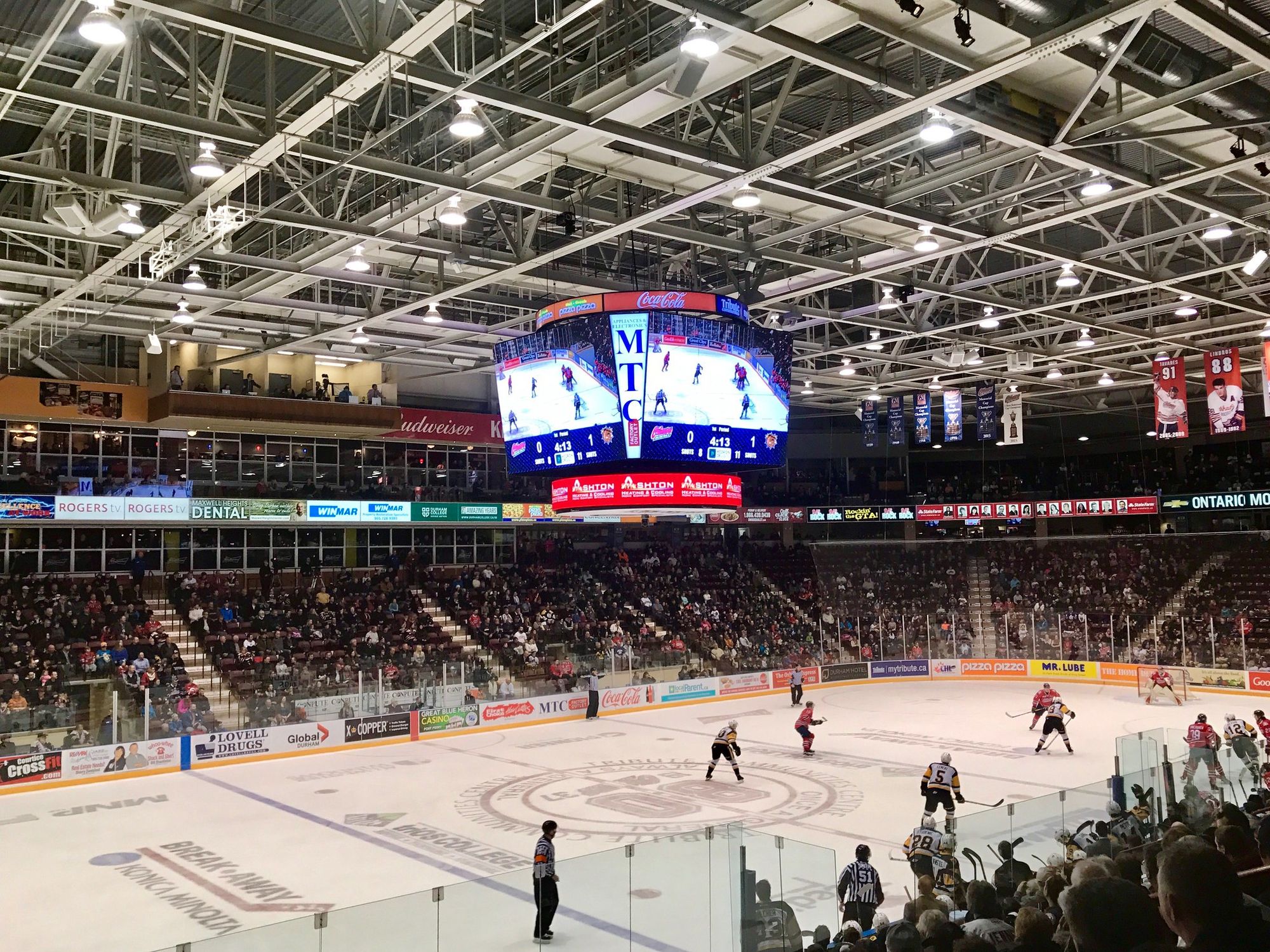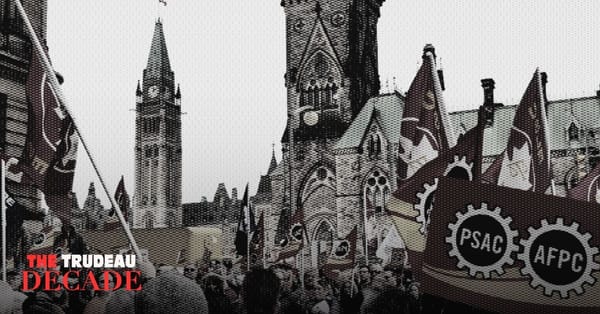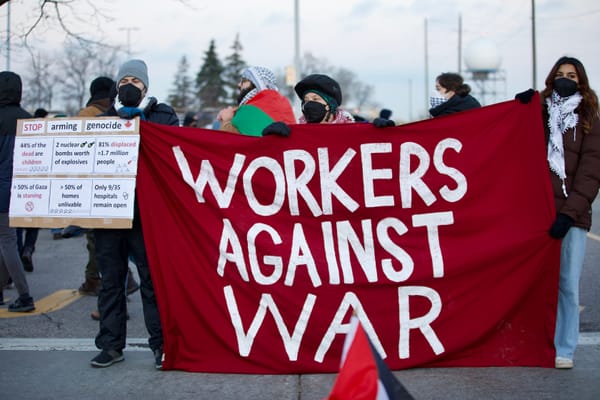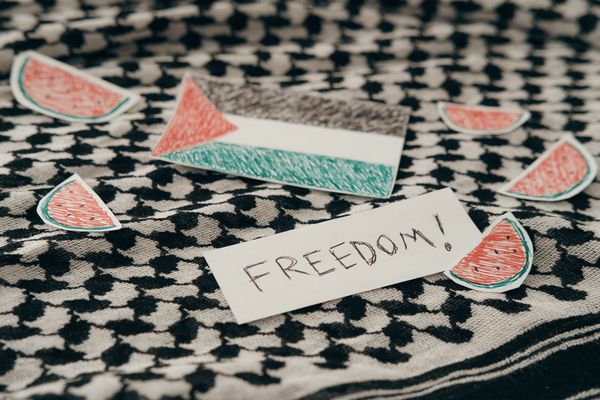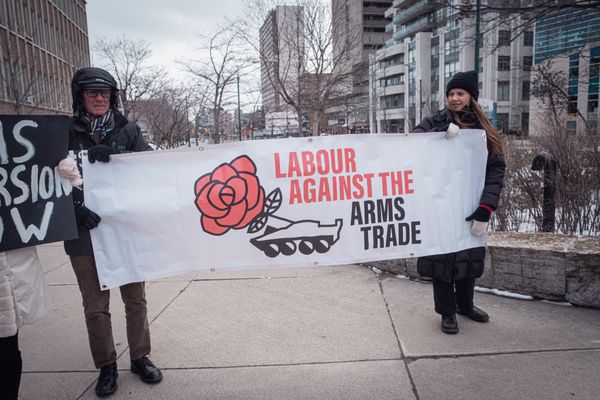As the World Junior Ice Hockey Championships recently drew to a close in Edmonton, many of Team Canada’s players are looking ahead to opportunities in the professional junior leagues. Labour unions should be doing the same.
The ongoing return to play of various major sports leagues and NCAA has put a spotlight on the exploitation present within sports capitalism. While major leagues have powerful unions, and a healthy stream of advocacy and labour power exists to transform American college sports, junior hockey has largely escaped this spotlight.
This is only to the detriment of its athletes’ working conditions. The Canadian Hockey League (CHL) and its member organizations — the Ontario Hockey League (OHL), Western Hockey League (WHL), and Quebec Major Junior Hockey League (QMJHL) — are perhaps some of the most exploitative in professional sport.
In February 2020, the CHL settled a lawsuit alleging it hasn’t been paying players minimum wage, back pay or overtime. (Since that lawsuit was filed, the CHL has successfully lobbied several provincial governments for exemptions to minimum wage law.) In July 2020, the CHL appointed a panel to investigate allegations of abuse within the leagues. In September 2020, a new lawsuit alleged the CHL, NHL and its constituent organizations were conspiring to limit the opportunities of players to make a living wage.
The National Hockey League Players’ Association (NHLPA) is one of the most combative unions in pro-sports, with multiple lockouts, including a cancellation of the 2004 NHL season due to a breakdown in bargaining. In contrast, the pressure against the CHL has been driven by individual players. In an energized moment in the fightback against the CHL’s labour practices, where are the unions?
A History Of Failed Organizing
Efforts to organize the CHL have been subject to extraordinary forms of union busting. The Canadian Hockey League Players’ Association (CHLPA) was a novice effort to unionize in 2012, without much in the way of labour organizing expertise or institutional backing. It collapsed, due in no small part to the CHL hiring a private investigator to look into its executive director and the bizarre allegations that ensued. The CHLPA persisted as an advocacy organization, helping launch the aforementioned lawsuit, but disappeared after 2017. Its domain is currently for sale.
Similarly, The World Association of Ice Hockey Players, a union representing players in international leagues, has stalled in organizing the CHL and has switched to a support and advocacy role in ongoing lawsuits.
The most promising organizational effort in the CHL was through Unifor, which made its organizing efforts public in 2014. One of Canada’s most prominent and well funded labour unions making a concerted push into minor league hockey could have addressed many of the issues that plagued earlier drives. Yet, there has been almost no follow up from Unifor since. For all intents and purposes, this effort appears to have been abandoned.
Various organizing efforts morphing into mere advocacy belies the difficulty of the task ahead. But the string of successes around class-action lawsuits and the ongoing pressure driven by workers should also highlight its importance and urgency.
Unions Can’t Give Up On The CHL
The NHL posted $5.09 billion USD in revenue for its 2018-2019 season, with a complex system of revenue sharing to ensure its teams are on an even playing field. This is built on the back of an athletic underclass of Canadian minor league hockey players that aren’t even classified as employees, yet remain essential to the development, drafting and exploitation that nets huge NHL profits.
CHL players are typically between the ages of 16 and 21, with many forgoing higher education and professional opportunities for the chance to make a go at the NHL. Other major sports rely heavily on an equally exploitative NCAA Division 1-to-professional sports pipeline. While basketball and football respectively field more than 350 and 250 Division 1 teams, there are only 61 Division 1 hockey teams.
CHL athletes accounted for more than 35 per cent of players selected in the 2020 NHL draft. And while the NCAA has experienced ongoing, high profile efforts to organize its players, the CHL has shamefully been abandoned by Canadian labour unions.
CHL teams are able to leverage the presumed opportunities they provide, as well as their financials, to justify the exploitation of their athletes. Despite numerous success stories of increasing profitability for some teams in recent years, the CHL maintains it’s both essential and unprofitable to justify not paying players, providing stipends instead.
The tiny stipend has been theorized as payment that makes players ineligible to transfer to NCAA affiliated schools, forcing them to remain in the CHL if they initially chose to join it, and locking them in a system that pays an average of $50 for a 35- to 40-hour workweek. CHL constituents also maintain inadequate scholarship funds in lieu of real pay.
The age range, four-year window of play and precarity of CHL players also provides an enormous impediment to organizing power, due to high turnover, inexperience, and the potential for blowback via roster cuts. But union organizing infrastructure can be crucial to developing labour education and providing pathways to unionizing.
The CHL claims to be a league perpetually teetering on insolvency. This rhetoric exists to drive off any ideas about unionizing players may have. If the junior leagues are truly essential to fielding and drafting NHL level talent, paying its players won’t change that. In fact, paying players will be a win-win no matter what happens. A labour victory in the CHL will have enormous repercussions in smoothing the rink for all of junior hockey.
Bringing Labour To The Forefront Of Canadian Sport
Unifor’s highest profile labour fight in recent years, the 2020 Regina Co-op Refinery Complex lockout, resulted in an unequivocal loss. However, there have been increasing rates of unionization for young people in recent years. A victory in junior hockey presents any union with the opportunity for a major PR coup, particularly if their aim is to bring millennials and zoomers into the labour movement. The legal struggles in junior leagues that have been settled and are currently in play also point to significant labour unrest, something a union would do well to capitalize on.
There’s even precedent: Other “unprofitable” leagues that have unionized, such as the WNBA, have still been able to win big in bargaining. The Professional Hockey Players’ Association, which represents two American junior leagues, has negotiated guaranteed wages for its members.
Unionizing the CHL is only a matter of will. In any other industry, this would be a high profile opportunity for labour, but the CHL’s hostility to unionizing efforts appears to have turned away even one of the most powerful Canadian unions.
Left in the lurch are more than 1,400 young people exploited mercilessly by league ownership and making less than the average gig worker. These players have been left to fend for themselves, and while they’ve done an admirable job in court, nothing has changed systemic issues they face.
The sweatshop conditions of minor hockey are about to intensify, both through the expectation of athletes to play through the pandemic, and further austerity to maintain profit margins due to losses incurred during shutdowns.
And if our labour unions won’t help them, who will?

